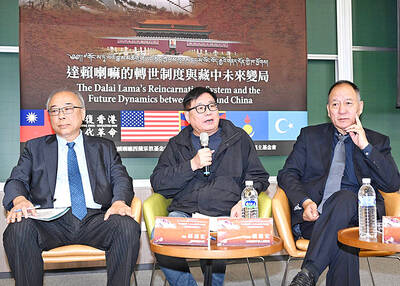The first two Oliver Hazard Perry-class frigates purchased by Taiwan from the US are expected to be delivered in 2015, Navy Chief of Staff Kao Tien-chung (高天忠) said yesterday.
The two warships, which cost NT$5.2 billion (US$175 million), are to replace two Knox-class frigates, whose condition is the worst in the entire fleet, Kao said during a hearing of the Legislative Yuan’s Foreign and National Defense Committee.
The ships are part of an order of four Perry-class frigates that the US government has agreed to sell to Taiwan, he said.
On Wednesday, the US House Committee on Foreign Affairs unanimously agreed to introduce legislation that would authorize the sale of the four frigates — the USS Taylor (FFG-50), USS Gary (FFG-51), USS Carr (FFG-52) and USS Elrod (FFG-55) — to Taiwan.
The four warships were commissioned between 1984 and 1985 and, except for the USS Gary, which was decommissioned in March, are all in active service.
Kao added that between 2015 and 2018, Taiwan would design and build its own salvage ship prototype and another amphibious warfare ship.
The navy is also planning to buy 36 used AAV-7 assault amphibious vehicles from the US.
With its river-crossing ability, the AAV-7 will help strengthen the mobility and expeditionary capabilities of the marine corps, he said.
However, Chinese Nationalist Party (KMT) Legislator Lin Yu-fang (林郁方) questioned the necessity of the purchases, given that the military already has 54 AAV-7s.
Equipped with 50-caliber machine guns and 40mm automatic grenades, the AAV-7 is not powerful enough and does not necessarily have better mobility than wheeled armored vehicles, Lin said.
He suggested that the military consider acquiring more Taiwan-made Yunpao CM-32 eight-wheeled armored vehicles to meet its needs.

ALIGNED THINKING: Taiwan and Japan have a mutual interest in trade, culture and engineering, and can work together for stability, Cho Jung-tai said Taiwan and Japan are two like-minded countries willing to work together to form a “safety barrier” in the Indo-Pacific region, Premier Cho Jung-tai (卓榮泰) yesterday said at the opening ceremony of the 35th Taiwan-Japan Modern Engineering and Technology Symposium in Taipei. Taiwan and Japan are close geographically and closer emotionally, he added. Citing the overflowing of a barrier lake in the Mataian River (馬太鞍溪) in September, Cho said the submersible water level sensors given by Japan during the disaster helped Taiwan monitor the lake’s water levels more accurately. Japan also provided a lot of vaccines early in the outbreak of the COVID-19 pandemic,

Kaohsiung Mayor Chen Chi-mai (陳其邁) on Monday announced light shows and themed traffic lights to welcome fans of South Korean pop group Twice to the port city. The group is to play Kaohsiung on Saturday as part of its “This Is For” world tour. It would be the group’s first performance in Taiwan since its debut 10 years ago. The all-female group consists of five South Koreans, three Japanese and Tainan’s Chou Tzu-yu (周子瑜), the first Taiwan-born and raised member of a South Korean girl group. To promote the group’s arrival, the city has been holding a series of events, including a pop-up

TEMPORAL/SPIRITUAL: Beijing’s claim that the next Buddhist leader must come from China is a heavy-handed political maneuver that will fall flat-faced, experts said China’s requirement that the Dalai Lama’s reincarnation to be born in China and approved by Beijing has drawn criticism, with experts at a forum in Taipei yesterday saying that if Beijing were to put forth its own Dalai Lama, the person would not be recognized by the Tibetan Buddhist community. The experts made a remarks at the two-day forum hosted by the Tibet Religious Foundation of His Holiness the Dalai Lama titled: “The Snow Land Forum: Finding Common Ground on Tibet.” China says it has the right to determine the Dalai Lama’s reincarnation, as it claims sovereignty over Tibet since ancient times,

Temperatures in some parts of Taiwan are expected to fall sharply to lows of 15°C later this week as seasonal northeasterly winds strengthen, the Central Weather Administration (CWA) said today. It is to be the strongest cold wave to affect northern Taiwan this autumn, while Chiayi County in the southwest and some parts of central Taiwan are likely to also see lower temperatures due to radiational cooling, which occurs under conditions of clear skies, light winds and dry weather, the CWA said. Across Taiwan, temperatures are to fall gradually this week, dropping to 15°C to 16°C in the early hours of Wednesday